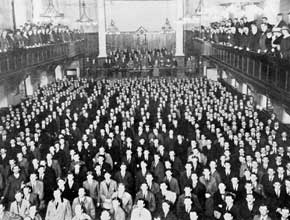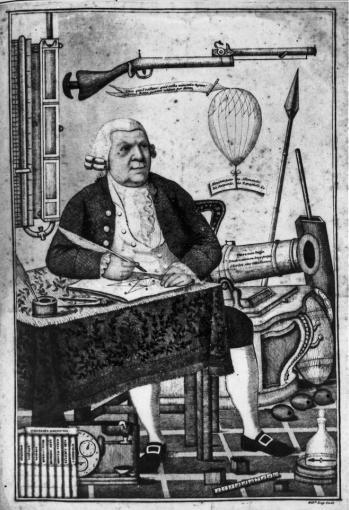The University Service Units have their origins in the Army reforms of Richard Haldane, Secretary of State for War, from 1905 to 1908. In the Territorial and Reserve Forces Act of 1907, the Universities were invited to establish Officers’ Training Corps on the stipulation that they must have a Committee responsible for Military Education. The University of Glasgow appointed a Working Party to consider the matter which reported thirteen months later, and the Military Education Committee was established on 21st April 1908 to deal with the formation and management of the UOTC and to conduct all correspondence with the War Office. The Convener of that Working Party and the Committee (of twenty four years) was Dudley Medley, Professor of Modern History, who averred that, next to the work of his classes, the UOTC was his chief interest and pride.
The Committee vigorously went about its task and in November 1908 the UOTC was inaugurated by Richard Haldane, accompanied by General Sir Archibald Murray, Director of Military Training at the War Office. Haldane was interrupted, as was the habit of the day, by suffragettes: it would be a hundred years before the first female UOTC Commanding Officer was appointed.
The Committee quickly recruited 400 Cadets, 1 in 7 of the student population, forming three infantry companies and one company of engineers. The Committee concluded in 1910 that it must build its own headquarters. Court gave the site and the Committee raised the necessary loans, which were paid off in a few years. Building began in 1911, and the Officer Training Centre was opened in January 1912 by the Earl of Rosebery, Chancellor of the University. The process was repeated with the then Territorial Army Volunteer Reserve Association at a cost of £1.3m to rebuild the premises, which were opened in 1988 by Sir William Kerr Fraser and Sir Graham Hills, Principals of the Universities of Glasgow and Strathclyde.
The Committee has always been at the forefront of new developments, both locally and nationally, in order to influence their direction, whether with the services direct or with the Council of Military Education Committees. Professor Medley was involved in the initiative to create what is now COMEC and served as chairman for ten years.
During the Second World War the Committee facilitated the establishment of a University Naval Division which vanished with the end of war, not to be resurrected for another quarter of a century as the Royal Naval Unit in 1971. They also sponsored in 1941 the inauguration in the Bute Hall by Sir Archibald Sinclair, Rector, of the national scheme for establishing Air Squadrons in Universities.
The Universities agreed to change the composition of the Committee in 1978 to give the University of Strathclyde parity of membership.
The Committee in 1996 invited the University of Paisley and Glasgow Caledonian University each to be represented by an active member.

